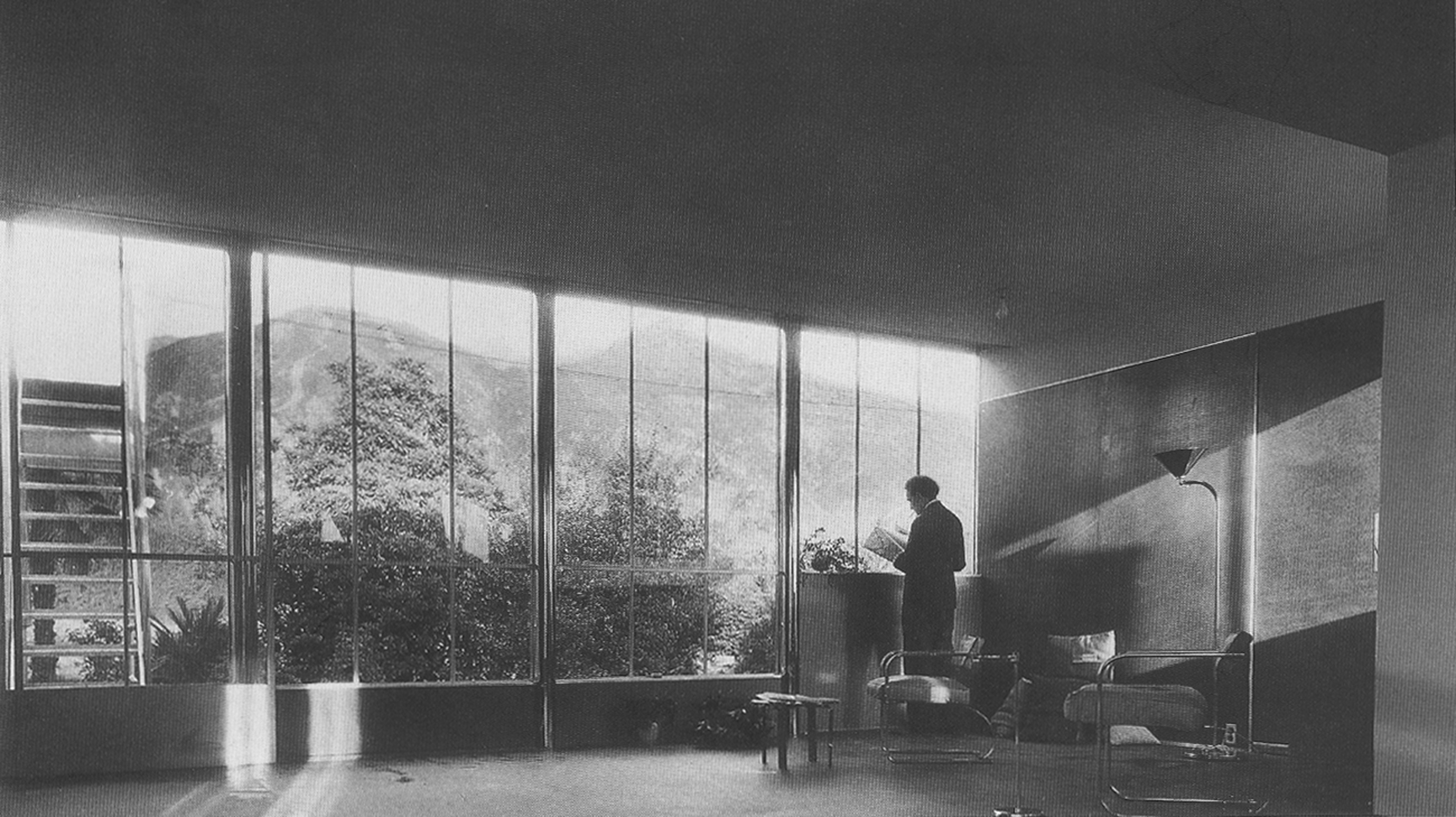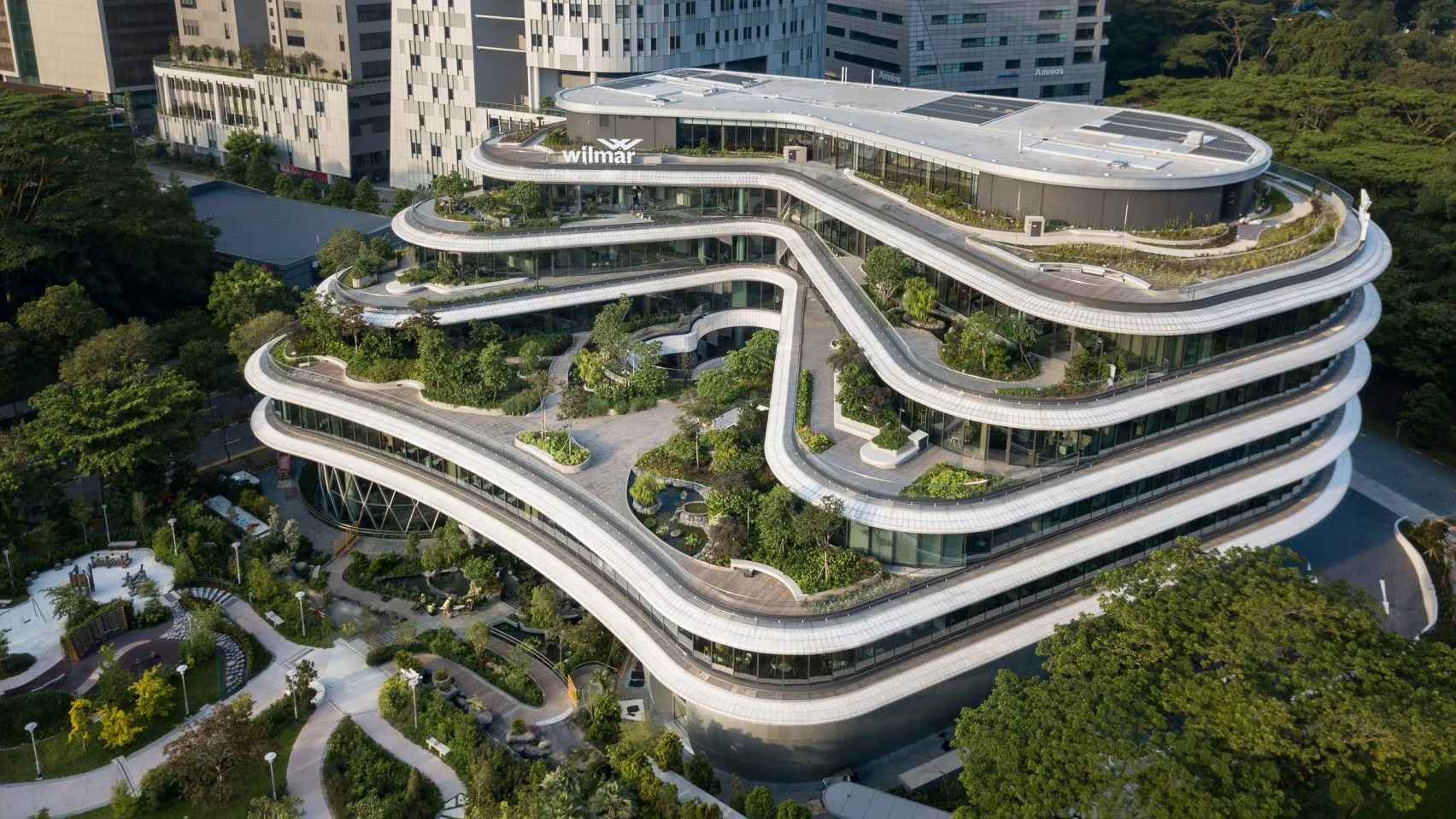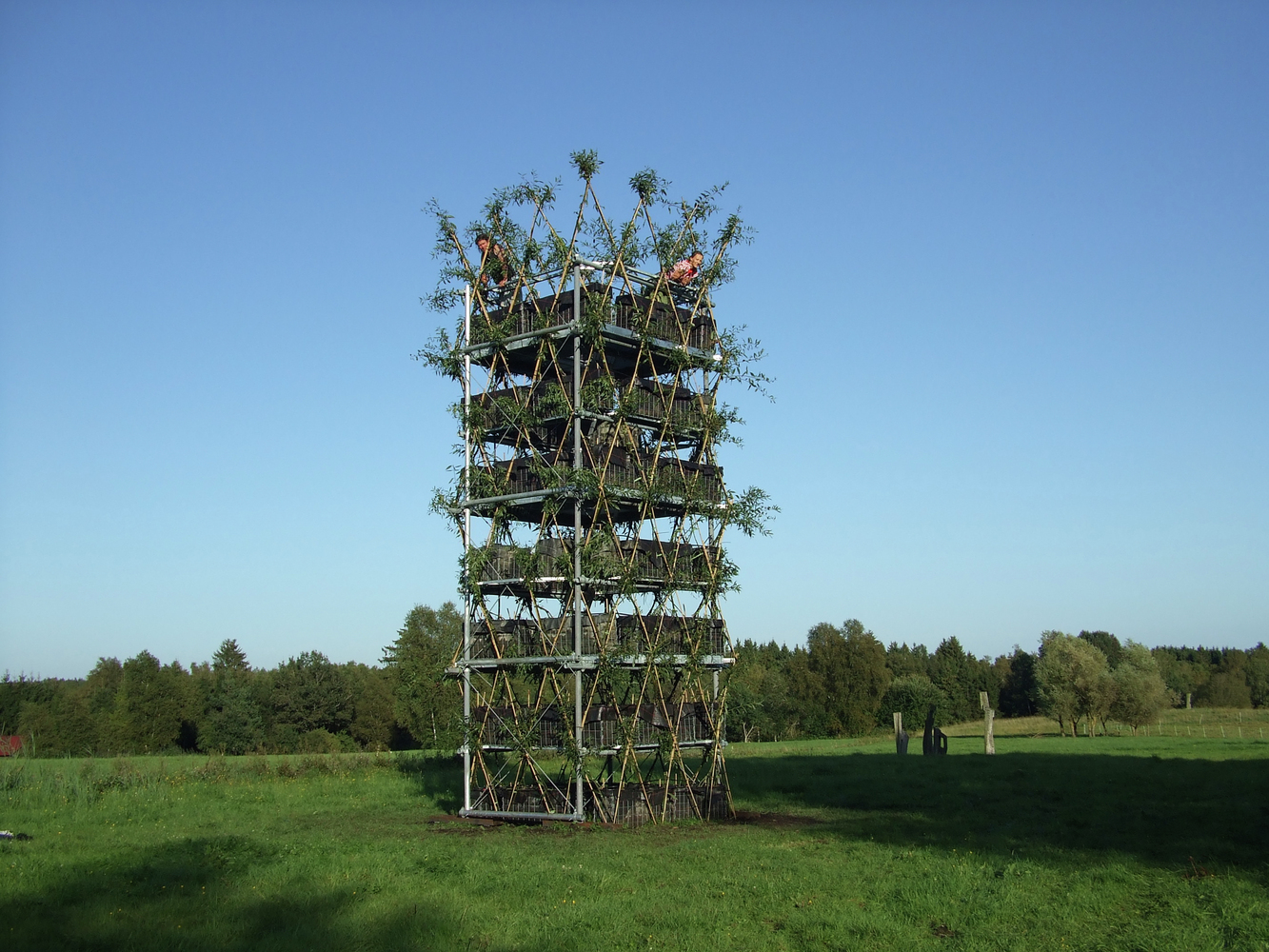“Architecture is the will of an epoch translated into space.” – Richard Neutra
In the annals of architectural history, few names shine as brightly as that of Richard Neutra. An influential figure of the mid-20th century, Neutra’s innovative designs and commitment to sustainability have left an indelible mark on the world of architecture. His iconic structures stand not only as masterpieces of form and function but also as early beacons of sustainable design principles that have become increasingly vital in our contemporary world.
Born in Vienna, Austria, in 1892, Richard Neutra’s journey into the world of architecture began early in life. His fascination with the built environment and his deep appreciation for the interplay between spaces and the natural world laid the foundation for his groundbreaking career.

Richard Neutra trabajando en la casa Beard, Altadena, California, 1935. COLEGIO DE DISEÑO AMBIENTAL, UNIVERSIDAD ESTATAL DE CALIFORNIA EN POMONA.
Neutra’s architectural education took him to Zurich and then to the United States, where he worked with luminaries like Frank Lloyd Wright and Rudolf Schindler. These experiences deeply influenced his design philosophy, which emphasized harmony with nature, functionalism, and the creation of spaces that enhanced the lives of their occupants.
One of the defining characteristics of Neutra’s work was his unwavering commitment to the idea that architecture should serve the needs of its inhabitants. His designs were not just aesthetically pleasing but were also meticulously planned to optimize functionality and usability.
One of his most famous creations, the Kaufmann Desert House in Palm Springs, California, exemplifies this principle. Designed for Edgar J. Kaufmann in 1946, the house seamlessly blends into the arid desert landscape. Its floor-to-ceiling glass walls invite the natural surroundings inside, creating a symbiotic relationship between the built environment and the desert ecosystem. Neutra’s meticulous attention to detail ensured that the house was not just a work of art but also a comfortable and functional home.

Lovell Health House
Long before sustainability became a buzzword in architecture, Richard Neutra was a pioneer in the field. His designs incorporated innovative techniques and materials that minimized the environmental impact of his buildings. He recognized the importance of passive solar design, natural ventilation, and the use of locally sourced materials.
The Lovell Health House in Los Angeles, completed in 1929, is a prime example of Neutra’s sustainable design principles. It featured large windows that allowed for ample natural light and ventilation, reducing the need for artificial lighting and air conditioning.
he house’s cantilevered design maximized the use of available space while minimizing the disturbance to the natural terrain. Neutra’s approach to sustainability was not only forward-thinking but also integral to his architectural vision.
Richard Neutra’s influence on the world of architecture is immeasurable. His emphasis on clean lines, open spaces, and a deep connection to nature helped shape the mid-20th-century Modernist movement. Architects like Richard Meier and Norman Foster have cited Neutra as a significant influence on their work.
Furthermore, his commitment to sustainability paved the way for future generations of architects to prioritize eco-conscious design. Neutra’s ideas about blending the built environment with nature and creating spaces that enhance the well-being of their occupants have become central tenets of contemporary sustainable architecture.

Miller House
As the world grapples with the challenges of climate change and the need for sustainable living, Richard Neutra’s legacy takes on renewed significance. His pioneering approach to sustainable architecture serves as a blueprint for addressing the environmental crises of our time.
Architects and designers today continue to draw inspiration from Neutra’s work, incorporating his principles into modern designs that prioritize energy efficiency, use of renewable materials, and a harmonious coexistence with the natural world. Neutra’s vision is a reminder that sustainable architecture is not a recent trend but a timeless pursuit that can transform our relationship with the environment.
Richard Neutra’s contributions to the world of architecture and sustainable design are undeniable. His visionary approach to blending form and function while prioritizing sustainability has left an enduring legacy that continues to shape the field of architecture today. As we confront the challenges of the 21st century, Neutra’s work serves as a source of inspiration and a reminder that architecture has the power to harmonize with nature and enhance the lives of those who inhabit it. Richard Neutra, the architect whose will translated an epoch into space, remains a guiding light for architects and designers committed to creating a sustainable and harmonious future.






Leave A Comment